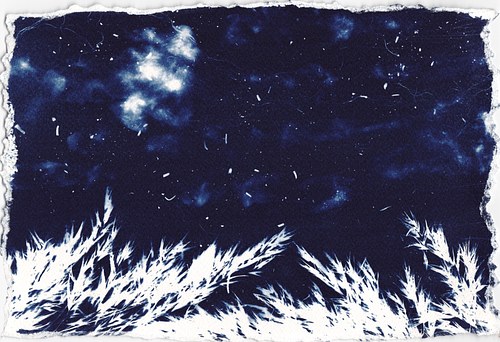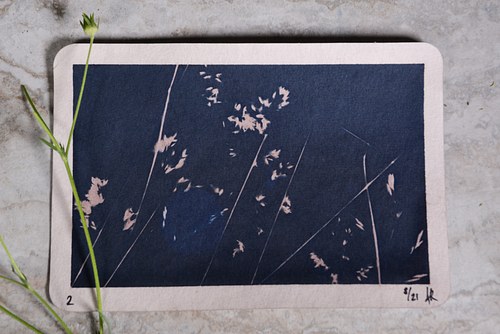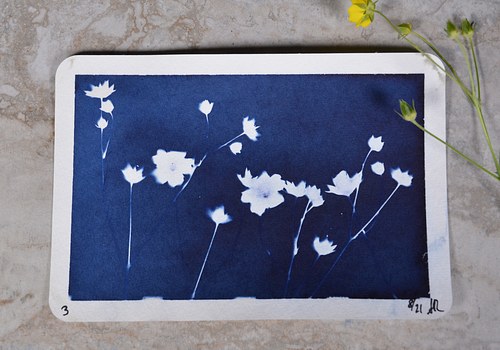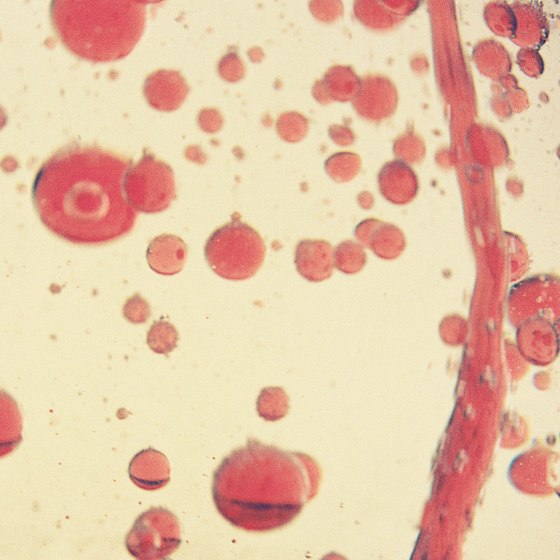This gallery holds an ever growing collection of a process I fell fast in love with, Cyanotypes. Each one is wholly original and unique, created with borrowed flora from the wild lands of the Rocky Mountains. The process from start to finish engages my love of nature and free flowing experimentation. Every print is created with care for the natural materials and thoughtfulness in composition. Each session begins with a foraging hike for fallen leaves, seed pods, branches, flowers, and any other material that catches my eye. Once these materials are home, I begin staging them across a hand coated page. Even my process of coating the paper with the light sensitive emulsion invites freedom and spontaneity, as I embrace the chaos of brushstrokes and uneven edges, sometimes even spilling or dripping the emulsion down the page, sometimes coating the paper in other materials such as berry dye, watercolor paint, or coffee stains. Once my prints are ready for the sun, I let my intuition pair these unique pages with my foraged materials, determining the placement of each object with the inspiration I get from the shapes and textures of my foraged collection. Often including transparencies and artificial objects, each print is a unique story or representation of the natural world. Once my printing is completed, I embark on another hike to return my borrowed materials to their natural environments, giving them back to the forest floor now having captured this moment in the cycle of life with the deep, beautiful Prussian blue of the Cyanotype.
-- many of the prints in this collection were created while in the Arteles Silence Awareness Existence residency in Haukijärvi, Finland in February, 2024. One significant element I want to note; I was unable to find a pane of glass to press these for exposure. Instead, I found a large sheet of plexiglass used by residents as painting pallets. Theses exposures often feature the pallet knife scratches left behind by the countless artists before me, turning my prints into a record of not only the plant life of the area, but also the mark making of the artists over the years this residency has operated. All artificial objects were also found materials from the Arteles campus. --
A little bit about the cyanotype process:
This is a camera-less technique that involves laying an object on paper coated with a solution of iron salts before exposing it to a UV light source, primarily the Sun, and washing with water to create stunning white and Prussian blue images. Invented by Sir John Herschel who, after experimenting with various techniques of Sun printing, discovered the success of the cyanotype process in 1842. This method proved to be easier, cheaper, and more durable than the previous silver-based printing method. In 1843, Anna Atkins adopted this method to create the first photographic book, "Photographs of British Algae: Cyanotype Impressions". Atkins, a talented illustrator, saw the potential in the cyanotype to be a more accurate way to depict the structures of plants. She created 3 full volumes of work over the span of 10 years, representing a key step in the history of scientific illustration and accessible photographic printing. Over time, the cyanotype method became a popular process for several avenues of printing, including the creation of "blue print" reproductions for architecture firms and construction companies, the term being coined "blue" print for the deep Prussian blue of the cyanotype. With a lull in popularity with the invention of digital printers, the method has fallen into obscurity. However it is still a popular technique among artist, photographers, and art teachers. Becoming more popular in recent years for its accessibility, simplicity, affordability, and appreciation for the beautiful way the cyanotype represents nature. Joining this method with an ability to print inkjet transparencies has opened wide the realm of possibility.
Here are a few of many talented cyanotype artists to inspire: Meghann Riepenhoff, Aaron T Stephan, Kerry Herschell, Patricia Huff


















































